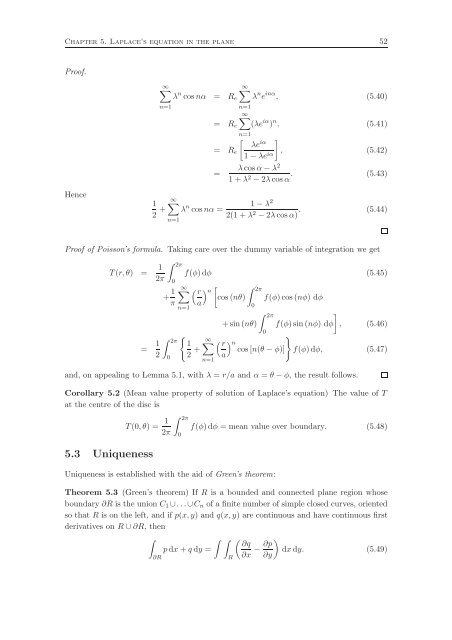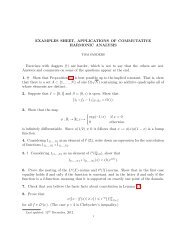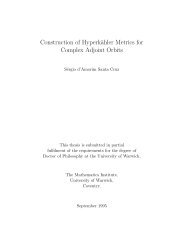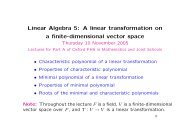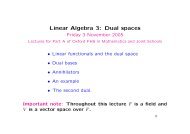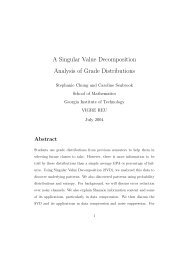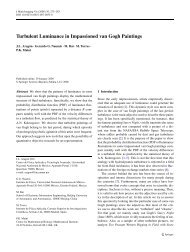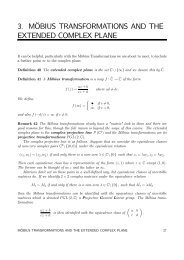Fourier Series and Partial Differential Equations Lecture Notes
Fourier Series and Partial Differential Equations Lecture Notes
Fourier Series and Partial Differential Equations Lecture Notes
Create successful ePaper yourself
Turn your PDF publications into a flip-book with our unique Google optimized e-Paper software.
Chapter 5. Laplace’s equation in the plane 52<br />
Proof.<br />
Hence<br />
∞<br />
λ n ∞<br />
cosnα = Re<br />
n=1<br />
1<br />
2 +<br />
= Re<br />
= Re<br />
=<br />
∞<br />
λ n cosnα =<br />
n=1<br />
n=1<br />
∞<br />
n=1<br />
λ n e inα , (5.40)<br />
(λe iα ) n , (5.41)<br />
λe iα<br />
1−λe iα<br />
<br />
, (5.42)<br />
λcosα−λ 2<br />
1+λ 2 . (5.43)<br />
−2λcosα<br />
1−λ 2<br />
2(1+λ 2 . (5.44)<br />
−2λcosα)<br />
Proof of Poisson’s formula. Taking care over the dummy variable of integration we get<br />
T(r,θ) = 1<br />
2π<br />
2π<br />
0<br />
+ 1<br />
π<br />
f(φ)dφ (5.45)<br />
∞<br />
n=1<br />
= 1<br />
<br />
2π 1<br />
2 0 2 +<br />
<br />
r<br />
<br />
n 2π<br />
cos(nθ)<br />
a<br />
n=1<br />
0<br />
f(φ)cos(nφ) dφ<br />
2π<br />
<br />
f(φ)sin(nφ) dφ , (5.46)<br />
+sin(nθ)<br />
0<br />
∞<br />
<br />
<br />
r<br />
n cos[n(θ−φ)] f(φ)dφ, (5.47)<br />
a<br />
<strong>and</strong>, on appealing to Lemma 5.1, with λ = r/a <strong>and</strong> α = θ−φ, the result follows.<br />
Corollary 5.2 (Mean value property of solution of Laplace’s equation) The value of T<br />
at the centre of the disc is<br />
T(0,θ) = 1<br />
2π<br />
5.3 Uniqueness<br />
2π<br />
Uniqueness is established with the aid of Green’s theorem:<br />
0<br />
f(φ)dφ = mean value over boundary. (5.48)<br />
Theorem 5.3 (Green’s theorem) If R is a bounded <strong>and</strong> connected plane region whose<br />
boundary ∂R is the union C1∪...∪Cn of a finite number of simple closed curves, oriented<br />
so that R is on the left, <strong>and</strong> if p(x,y) <strong>and</strong> q(x,y) are continuous <strong>and</strong> have continuous first<br />
derivatives on R∪∂R, then<br />
<br />
∂q ∂p<br />
pdx+qdy = − dxdy. (5.49)<br />
∂x ∂y<br />
∂R<br />
R


